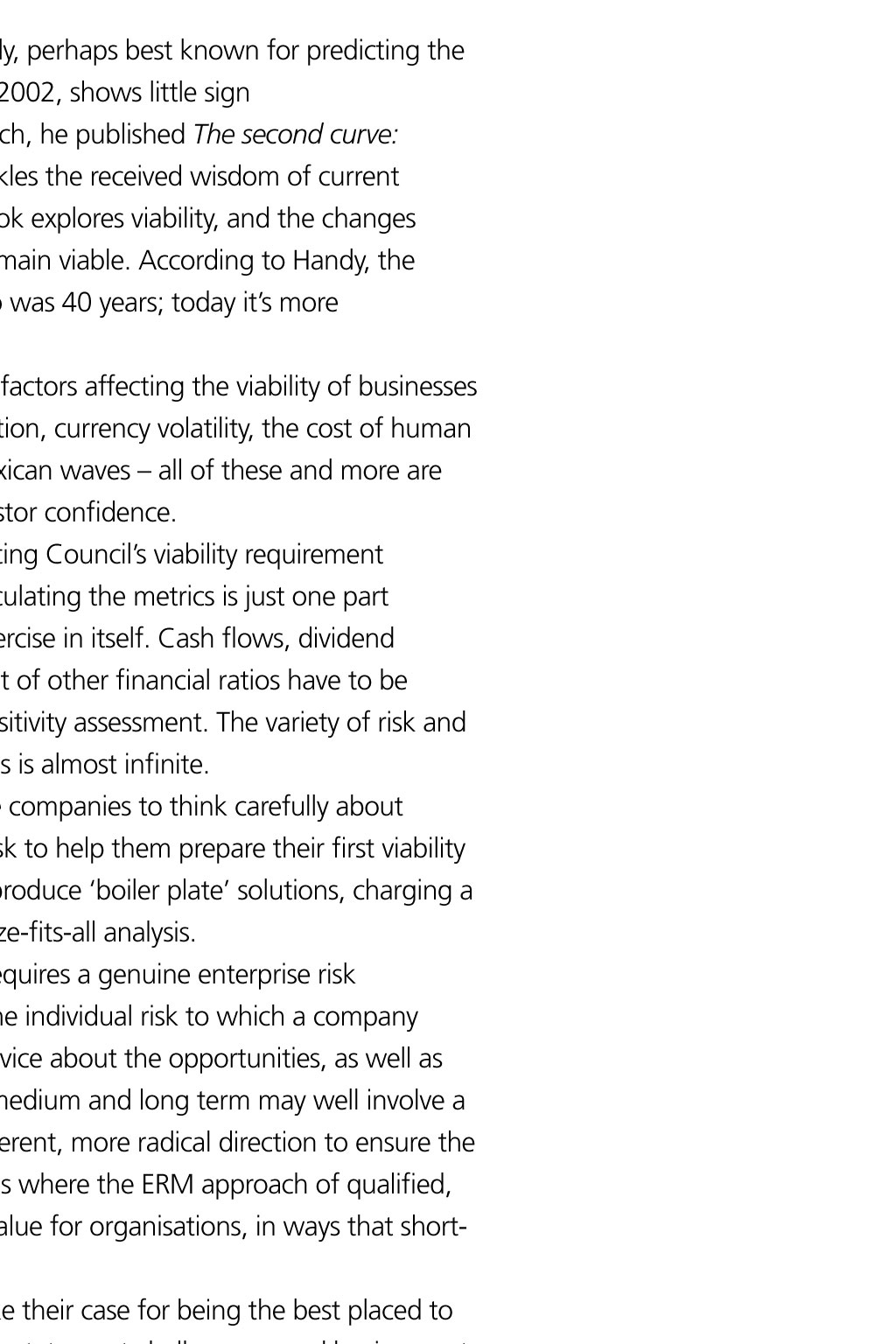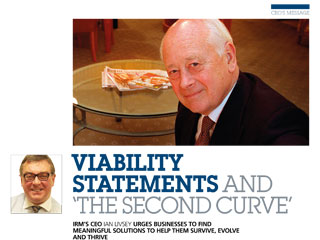












ceos message VIABIlIty stAtEMENts and The seCOnd CuRve IRMS CEO IAN LIVSEY URGES BUSInESSES TO fInD MEAnInGfUL SOLUTIOnS TO HELP THEM SURvIvE, EvOLvE AnD THRIvE M anagement guru Charles Handy, perhaps best known for predicting the rise of the portfolio career in 2002, shows little sign of slowing down at 83. in March, he published The second curve: thoughts on reinventing society, which tackles the received wisdom of current upward-growth models. Essentially, the book explores viability, and the changes businesses need to make to ensure they remain viable. According to Handy, the average lifespan of a business 20 years ago was 40 years; today its more like 14 years. Theres no question that the number of factors affecting the viability of businesses has grown over the past decade. Globalisation, currency volatility, the cost of human and non-human inputs, and economic Mexican waves all of these and more are playing havoc with stock markets and investor confidence. This makes fulfilling the Financial Reporting Councils viability requirement particularly challenging for businesses. Calculating the metrics is just one part of the challenge, and can be a complex exercise in itself. Cash flows, dividend cover, consumer forecasts and a whole host of other financial ratios have to be included, and then subjected to robust sensitivity assessment. The variety of risk and opportunity factors for individual businesses is almost infinite. Its in this area of specificity that Id urge companies to think carefully about matching their needs with whoever they ask to help them prepare their first viability statements. This isnt a job for those who produce boiler plate solutions, charging a significant fee for topped and tailed one-size-fits-all analysis. Approaching a precedent such as this requires a genuine enterprise risk management (ERM) approach, analysing the individual risk to which a company is or will be exposed, to give realistic advice about the opportunities, as well as the threats, that lie ahead. Viability in the medium and long term may well involve a second curve planning to move in a different, more radical direction to ensure the business survives, evolves and thrives. This is where the ERM approach of qualified, expert risk professionals can really deliver value for organisations, in ways that shortterm, off-the-peg solutions never can. I urge IRM members to be ready to make their case for being the best placed to provide meaningful solutions to the viability statement challenges and businesses to proactively go out and find them.